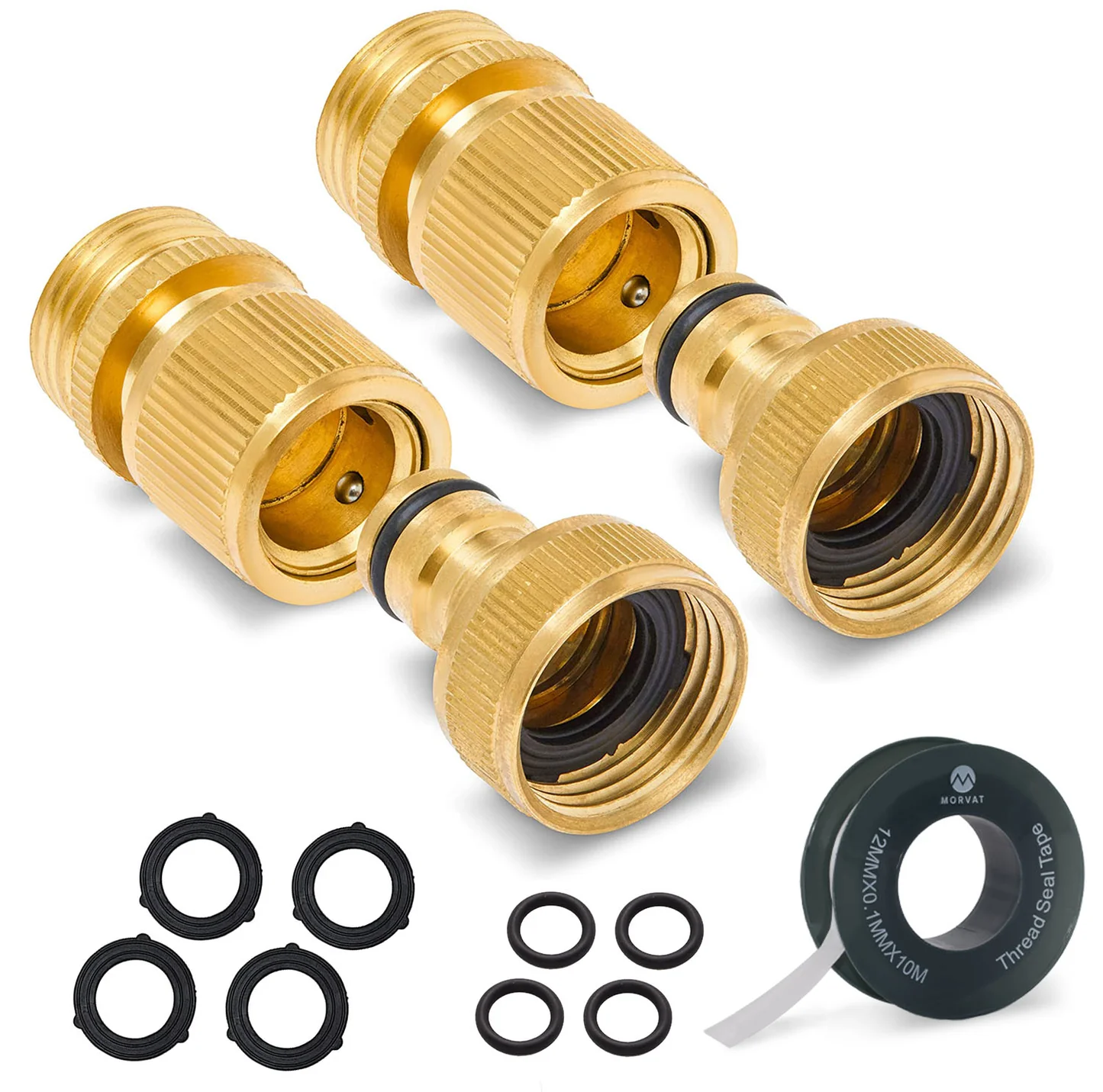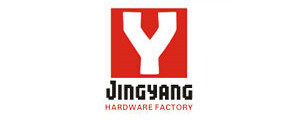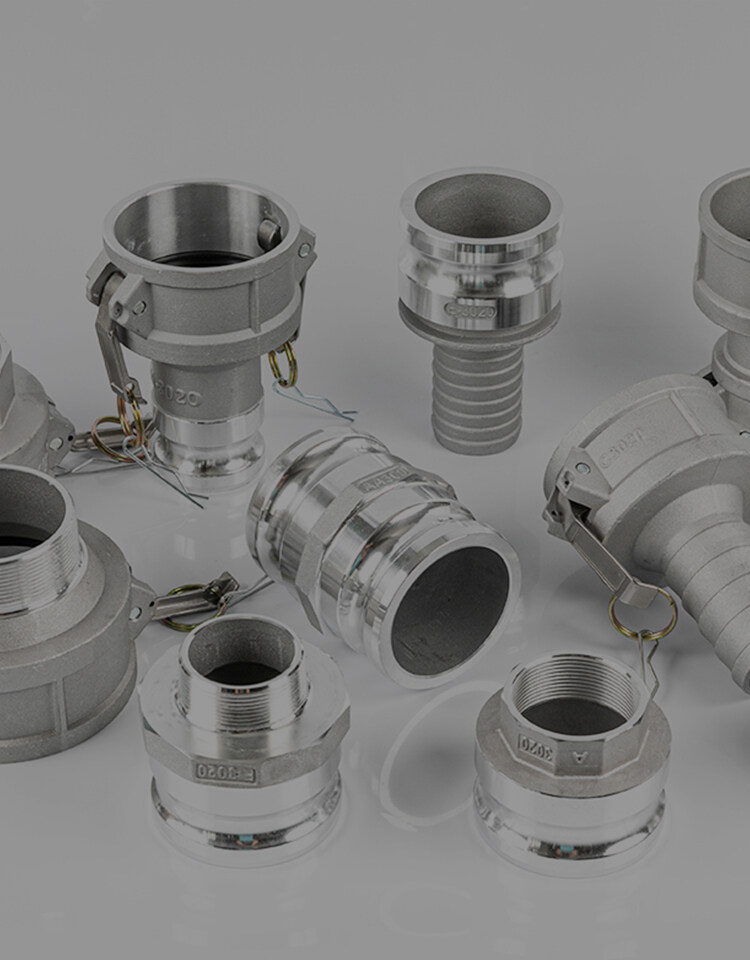Erreur de format d'e-mail
emailCannotEmpty
emailDoesExist
pwdLetterLimtTip
inconsistentPwd
pwdLetterLimtTip
inconsistentPwd

Nouvelles
Ici, vous pouvez décrire un morceau de texte que vous souhaitez exprimer

Mastering Hydraulic Bulkhead Compression Tube Fittings: Your Ultimate Guide
Hydraulic systems are the lifeblood of many industrial applications, providing the necessary force to drive machinery and equipment. At the heart of these systems are hydraulic bulkhead compression tube fittings, which serve as crucial connection points within hydraulic circuits. These fittings must ensure a secure and leak-proof seal, even under high pressure and in challenging environments. In this comprehensive guide, we’ll delve into the world of hydraulic bulkhead compression tube fittings, exploring their types, applications, and best practices for selection and installation.
Chapter 1: Understanding Hydraulic Bulkhead Compression Tube Fittings
Definition and Functionality
They are engineered to connect hydraulic tubing through a panel or bulkhead, allowing for a fluid transition while maintaining a barrier between different sections of a system. These fittings are designed to withstand the high pressures typical of hydraulic applications, ensuring a tight and secure connection that prevents leaks and maintains system integrity.
Importance in Hydraulic Systems
The importance cannot be overstated. They are critical in systems where space is limited and where tubing must pass through compartments or enclosures. By providing a secure pass-through, these fittings help maintain the hydraulic system’s pressure and prevent contamination from external environments.
Advantages Over Other Fitting Types
Compared to other fitting types, they offer several advantages. They are easier to install and remove without the need for extensive tools or disassembly of the system. Their design allows for a straightforward connection, which is essential for maintenance and repair operations. Additionally, the compression seal provides a high degree of reliability, reducing the risk of system failure due to leakage.
Chapter 2: The Various Types of Hydraulic Bulkhead Compression Tube Fittings
Hydraulic Steel Tube Fittings
Hydraulic steel tube fittings are known for their strength and durability, making them suitable for high-pressure applications and environments where corrosion resistance is a priority. These fittings are commonly used in industrial and marine applications where they are exposed to harsh conditions.
Hydraulic Straight Compression Tube Fittings
Hydraulic straight compression tube fittings are the simplest form of bulkhead fittings, providing a direct pass-through for hydraulic lines. These fittings are ideal for applications where space is at a premium and where the tubing does not need to be redirected or bent at the point of the bulkhead.
Specialty Fittings for Unique Applications
In addition to standard fittings, there are specialty designed for specific applications. These may include fittings with additional sealing mechanisms for extremely high-pressure environments or those made from exotic materials for chemical compatibility.
Chapter 3: The Role of Hydraulic Bulkhead Compression Tube Fittings in System Integrity
Ensuring Leak-Proof Connections
The primary role is to ensure leak-proof connections. A properly installed fitting will compress the tubing against the fitting’s ferrule, creating a metal-to-metal seal that is both robust and reliable. This is critical in maintaining the hydraulic system’s performance and preventing fluid loss, which can lead to environmental hazards and system inefficiencies.
Withstanding High Pressure and Vibration
Hydraulic systems often operate under high pressure and are subject to vibration, which can challenge the integrity of connections. They are designed to withstand these conditions, maintaining a secure seal even in the face of pulsating pressures and mechanical movement.
Compatibility with Various Hydraulic Fluids
Different hydraulic systems may use a variety of fluids, including petroleum-based oils, synthetic fluids, and water-glycol solutions. The materials used must be compatible with these fluids to prevent degradation and ensure the longevity of the fitting.
Chapter 4: Material Considerations for Hydraulic Bulkhead Compression Tube Fittings
Stainless Steel: Durability and Corrosion Resistance
Stainless steel is a popular material choice due to its excellent durability and corrosion resistance. It is well-suited for applications where the fittings are exposed to corrosive substances or extreme temperatures.
Brass: Cost-Effectiveness and Good Corrosion Resistance
Brass fittings offer a cost-effective alternative to stainless steel, with good corrosion resistance and compatibility with a wide range of hydraulic fluids. They are commonly used in less demanding applications where the pressures and temperatures are within moderate ranges.
Choosing the Right Material for Your Application
Selecting the right material for your tube fittings is crucial. Factors to consider include the operating environment, fluid type, pressure requirements, and budget constraints. In some cases, custom materials may be necessary to meet specific application needs.
Chapter 5: Sourcing Hydraulic Bulkhead Compression Tube Fittings
The Advantages of Sourcing from China Hydraulic Tube Fittings Manufacturers
China has emerged as a global manufacturing powerhouse, and this holds true in the production. Sourcing from China offers several advantages, including cost-effectiveness, a wide range of product offerings, and rapid production capabilities. Chinese manufacturers have invested heavily in state-of-the-art machinery and quality control processes, enabling them to produce hydraulic steel tube fittings that meet or exceed international standards. Additionally, the scale of production in China often means that buyers can secure bulk orders at competitive prices, which is particularly beneficial for large-scale projects or for businesses looking to maintain an inventory of hydraulic components.
Quality Assurance in Hydraulic Fitting Production
Quality assurance is paramount when it comes to hydraulic bulkhead compression tube fittings, as the integrity of a hydraulic system depends on the reliability of its connections. Reputable manufacturers in China understand this and have implemented rigorous quality control measures throughout the production process. From raw material selection to final inspection, every step is monitored to ensure that the fittings meet strict quality criteria. Many Chinese manufacturers also hold ISO certifications, which testify to their commitment to maintaining high-quality standards in their production processes.
Building Relationships with Suppliers for Custom Solutions
One of the key benefits of working with manufacturers, especially those in China, is the ability to develop custom solutions tailored to specific requirements. Building a strong relationship with a supplier can lead to collaborations that result in the fittings designed for unique applications or challenging environments. These partnerships can also facilitate faster turnaround times for custom orders and provide access to expert advice on material selection and fitting design.
Chapter 6: Installation Best Practices for Hydraulic Bulkhead Compression Tube Fittings
Preparing the Tubing and Fitting Components
Before installation, it is crucial to ensure that all tubing and fitting components are clean, free from debris, and undamaged. The tubing should be cut squarely and deburred to prevent any sharp edges from compromising the seal. It’s also important to select the appropriate fitting size and type for the tubing being used to ensure a proper fit.
Step-by-Step Installation Process
1. Inspect the fitting and tubing for any signs of damage or contamination.
2. Lubricate the threads and ferrules lightly if recommended by the manufacturer.
3. Insert the tubing into the fitting until it bottoms out, ensuring that it is aligned correctly.
4. Hand-tighten the nut onto the fitting, then use a wrench to tighten it to the manufacturer’s specified torque.
5. After the initial pressurization of the system, check for leaks and retighten if necessary.
Common Mistakes to Avoid During Installation
Avoid over-tightening the fittings, which can lead to thread stripping or deformation of the tubing. Under-tightening can result in leaks or disconnection under pressure. It’s also important not to mix components from different manufacturers or fitting series, as this can lead to incompatibility issues and potential system failure.
Chapter 7: Troubleshooting Common Issues with Hydraulic Bulkhead Compression Tube Fittings
Identifying and Resolving Leaks
Leaks in hydraulic systems are often due to improper installation or component wear. To resolve leaks, first identify the source by cleaning the area and pressurizing the system. Once identified, ensure that the fitting is tightened to the correct specifications. If the leak persists, inspect the fitting and tubing for damage and replace any faulty components.
Addressing Fitting Misalignment
Misalignment can cause undue stress on the fitting and lead to leaks or failure. To correct misalignment, loosen the fitting and realign the tubing before re-tightening. Always support the tubing to prevent it from exerting excessive force on the fitting.
Dealing with Pressure Fluctuations and Surges
Pressure fluctuations and surges can compromise the integrity of the fittings. To mitigate this, ensure that the system is equipped with appropriate pressure-relief valves and that the fittings are rated for the system’s maximum pressure. Regular system inspections can help identify potential issues before they lead to fitting failure.
Chapter 8: Enhancing System Efficiency with the Right Fittings
The Impact of Fitting Selection on Hydraulic Performance
The performance of a hydraulic system is significantly influenced by the quality and type of fittings used. They are designed to offer a robust and secure connection, ensuring that the system maintains its pressure and fluid integrity. The right fitting selection can prevent energy losses, reduce maintenance frequency, and extend the overall lifespan of the hydraulic system. When selecting fittings, engineers must consider factors such as material compatibility, pressure ratings, and the specific requirements of the application to ensure optimal performance.
Air Hose Reducer Fitting: Streamlining Pneumatic Connections
In pneumatic systems, air hose reducer fittings play a crucial role in connecting hoses of different diameters, streamlining the flow of compressed air. These fittings are essential when adapting larger system components to smaller hoses, ensuring a tight seal and maintaining consistent pressure throughout the system. By using air hose reducer fittings, technicians can avoid the need for multiple adapters, reducing potential leak points and improving the system’s overall efficiency.
Barbed Hose Reducer Fittings: Simplifying Transitions in Hose Sizes
Barbed hose reducer fittings are designed to connect hoses of varying diameters without the need for clamps or crimping tools. The barbed design allows for a quick and secure push-on connection, which is ideal for applications where hoses need to be frequently disconnected and reconnected. These fittings are particularly useful in low-pressure applications and can significantly simplify the assembly process, saving time and reducing the risk of improper installation.
Chapter 9: Innovations in Hydraulic Bulkhead Compression Tube Fitting Technology
Advances in Sealing Technology
Sealing technology in hydraulic bulkhead compression tube fittings has seen significant advancements. New materials and designs have been developed to provide superior resistance to extreme temperatures, pressures, and corrosive fluids. Innovations such as multi-seal and soft-seal options offer enhanced sealing capabilities, reducing the likelihood of leaks and improving the system’s reliability.
The Emergence of Smart Fittings with Integrated Sensors
The integration of sensors into hydraulic bulkhead compression tube fittings is a groundbreaking development. These smart fittings can monitor system performance in real-time, providing data on pressure, temperature, and flow rates. This information can be used for predictive maintenance, alerting operators to potential issues before they lead to system failure. The use of smart fittings is expected to increase system uptime and reduce maintenance costs.
Future Trends in Fitting Design and Materials
The future of hydraulic bulkhead compression tube fitting technology is likely to focus on the development of lighter, stronger, and more environmentally friendly materials. Innovations in composite materials and coatings are expected to provide enhanced corrosion resistance and reduce the environmental impact of fittings. Additionally, the design of fittings is likely to evolve to accommodate the increasing demand for miniaturization and higher pressure capabilities.
Chapter 10: Regulatory Standards and Certifications for Hydraulic Bulkhead Compression Tube Fittings
Understanding ISO and SAE Standards
International Organization for Standardization (ISO) and Society of Automotive Engineers (SAE) standards are critical in the design and manufacture. These standards ensure that fittings meet specific requirements for dimensions, tolerances, materials, and performance. Adherence to ISO and SAE standards guarantees that fittings are compatible with other components and can be used safely in various applications.
The Importance of Compliance in Global Markets
Compliance with international standards is essential for manufacturers looking to compete in global markets. It ensures that the tube fittings can be used in systems worldwide, facilitating international trade and cooperation. Compliance also provides a level of assurance to customers that the products they are purchasing are safe, reliable, and of high quality.
Certifications and Their Impact on Quality and Safety
Certifications from recognized bodies confirm that hydraulic bulkhead compression tube fittings have been tested and meet the required standards. These certifications are not just a mark of quality; they are a testament to the safety and reliability of the fittings. Manufacturers that invest in obtaining certifications demonstrate their commitment to excellence and their dedication to providing the best possible products to their customers.
Conclusion
Hydraulic bulkhead compression tube fittings may be small components within a hydraulic system, but their impact on performance and reliability is immense. A well-chosen fitting ensures a secure connection, maintaining system integrity even under high pressure. With the industry’s continuous innovations, such as smart fittings and advanced sealing technologies, and the adherence to regulatory standards, the future of hydraulic systems looks promising. Staying informed about these advancements and understanding the importance of quality fittings is crucial for any industry reliant on hydraulic power.

